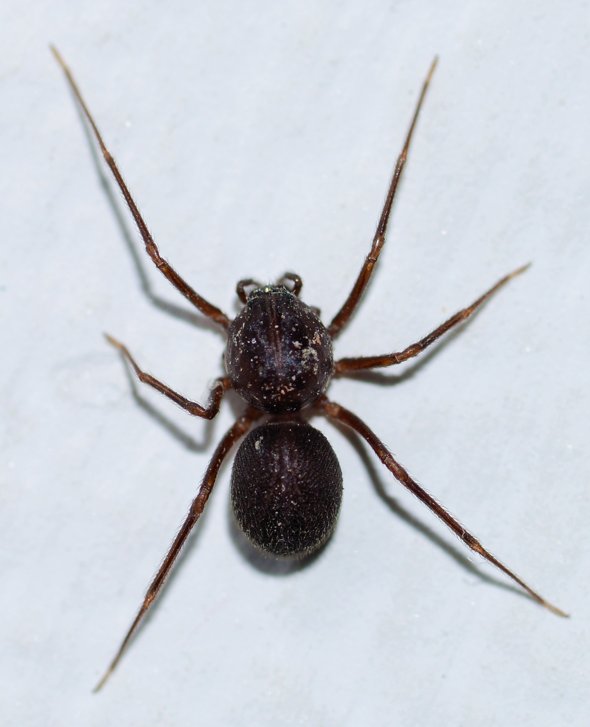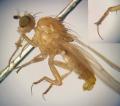Diptera.info :: Identification queries :: Other insects, spiders, etc.
Who is here? 1 guest(s)
|
Unknown insect
|
|
| Alvesgaspar |
Posted on 25-08-2014 23:38
|
|
Member Location: Lisbon, Portugal Posts: 573 Joined: 24.08.07 |
This one is most puzzling to me, doesn't even look like an insect. About 5mm long, found in house. Any idea? Thanks, Joaquim Alvesgaspar attached the following image:  [106.73Kb] |
|
|
|
| Alvesgaspar |
Posted on 25-08-2014 23:39
|
|
Member Location: Lisbon, Portugal Posts: 573 Joined: 24.08.07 |
... another view
Alvesgaspar attached the following image:  [128.09Kb] |
|
|
|
| Dmitry Gavryushin |
Posted on 26-08-2014 06:29
|
|
Member Location: Moscow region, Russia Posts: 3338 Joined: 17.10.05 |
A close relative of Hexapodus benedictus (cf. Jules Verne) |
|
|
|
| Tony Irwin |
Posted on 26-08-2014 09:21
|
|
Member Location: Norwich, England Posts: 7321 Joined: 19.11.04 |
Scytodes fusca - an American spider that has become established in Europe, or Scytodes vetulina
Edited by Tony Irwin on 26-08-2014 09:26 Tony ---------- Tony Irwin |
|
|
|
| Alvesgaspar |
Posted on 27-08-2014 15:49
|
|
Member Location: Lisbon, Portugal Posts: 573 Joined: 24.08.07 |
Thank you, Dmitry and Tony. It seems I was fooled by the lack of the front legs! Any idea on how they could be lost and which species are more likely to loose them? Joaquim |
|
|
|
| Tony Irwin |
Posted on 27-08-2014 20:59
|
|
Member Location: Norwich, England Posts: 7321 Joined: 19.11.04 |
This is one of the spitting spiders, which use a double stream of glue, squirted from specially adapted chelicerae to catch their prey. The glue dries on exposure to air, and (if properly applied) will restrain the prey item, so that the spider simply walks up to it and bites it on an extremity. Once the venom has taken effect, the spider can dine in leisure and safety. Occasionally the prey may not be sufficiently "tied down", and I guess accidents happen in these circumstances. Alternatively it may just be the result of a problem moult. Either way, it doesn't help us identify this female. Someone more familiar with the species may be able to say which on the basis of colour pattern, but the on-line images I have seen are not helpful in that respect. 
Tony ---------- Tony Irwin |
|
|
|
| Jump to Forum: |












